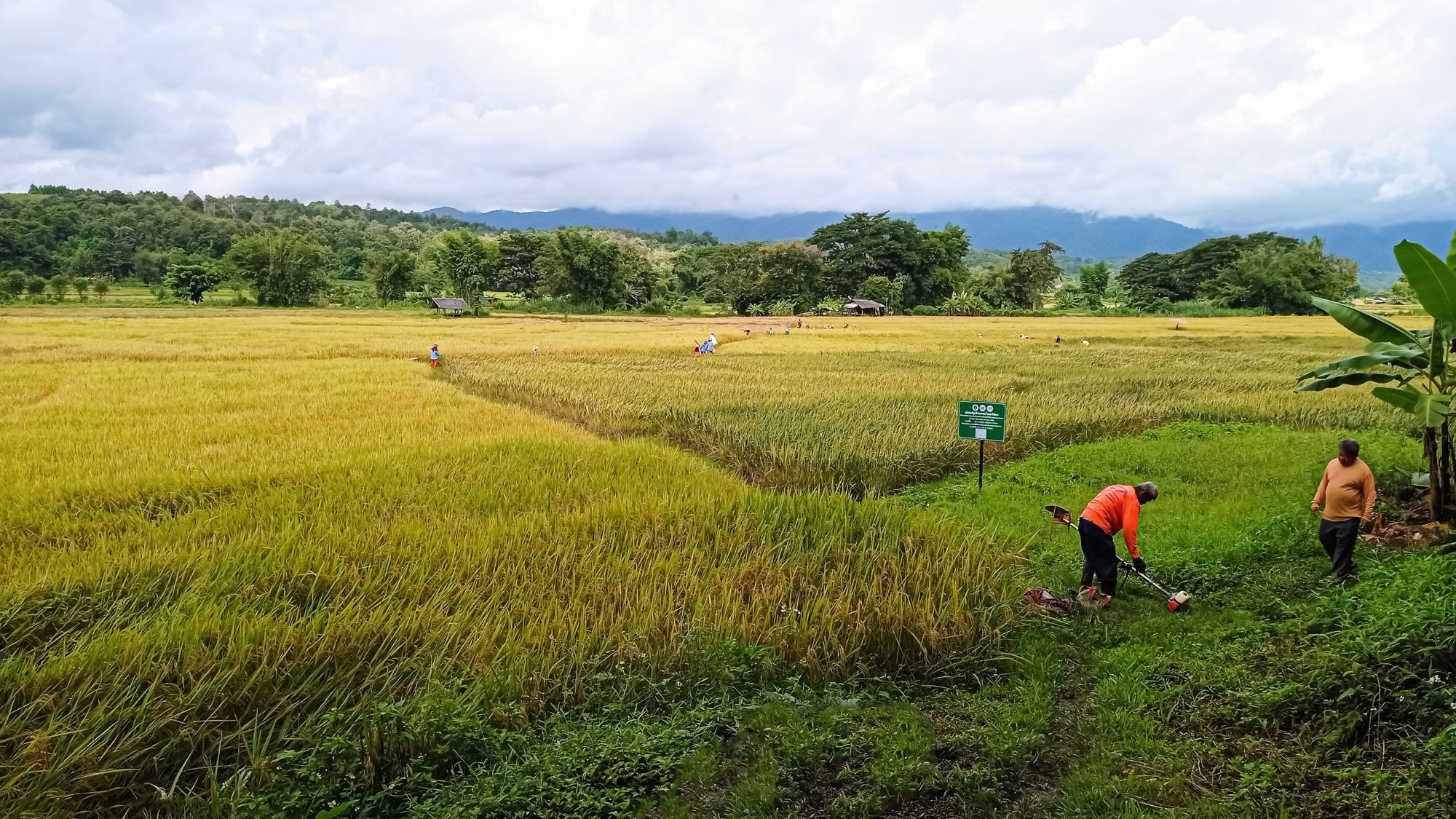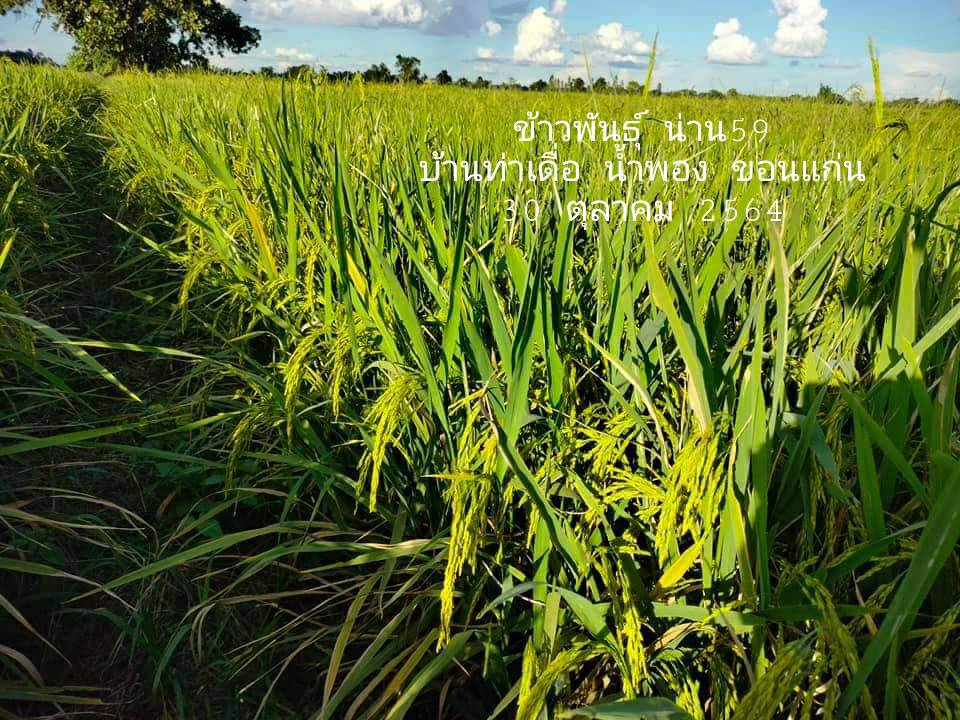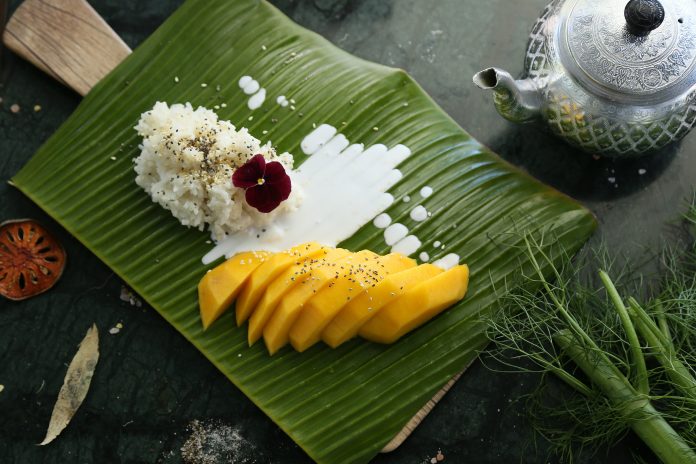Professor Apichart Vanavichit, Director of the Rice Science Center offers insight into how the next generation of glutinous rice varieties are critical to food security in Thailand and Laos
Rice can be broadly classified based on cooking properties as glutinous and non-glutinous. Cooked glutinous rice is sticky, translucent, and chewy with a sweet aftertaste, while non-glutinous rice is fluffier, and less sticky and sweet.
Furthermore, Glutinous rice contains more amylopectin, whereas non-glutinous rice contains more amylose.
Origin of glutinous rice
There are three groups of glutinous rice-based on grain sizes, small (japonica), medium (upland), and long slender (indica) grains. The origin of glutinous rice has become a hot topic for discussion by evolutionists who speculate that glutinous rice has two roots. Glutinous rice has been grown in the Greater Mekong Sub-region (GMS), especially in Laos, for 4,000 – 6,000 years, and at least 2,000 years in Yunnan, China, by Tai ethnic groups. In particular, ethnic groups in Myanmar, Thailand, and Laos helped conserve upland rice diversity. Furthermore, Laos has contributed the most remarkable genetic diversity in glutinous rice to the International Rice Genebank at the International Rice Research Institute (IRRI).
The key to food security
Laos and Thailand are the only countries that consume glutinous rice as primary stable food. Laos consumes glutinous rice at 171 kg per year, the highest per capita consumption globally. In Thailand, glutinous rice is vital for household consumption in the north and northeast at 125-155 kg per capita per year. Thai farmers typically grow side-by-side, glutinous rice for household consumption and Hommali rice for cash. The current consumption of glutinous rice in Thailand has been on the rise recently due to the popularity of the northeastern cuisines in restaurants and street foods among Thais and tourists. From 2021 to 2026, the demand for glutinous rice is increasing healthily.
Sticky rice is not just sticky
Glutinous rice provides high amylopectin for the food and beverage industries. China is the major importer of glutinous rice from Thailand and Vietnam, mainly for alcohol production. Unlike such industrial utilisation, glutinous rice cooking is a delicacy that starts from rice cooking. Glutinous rice cannot be appropriately done in an ordinary automatic rice cooker but depends on traditional streaming practices in a unique bamboo basket. Different glutinous rice varieties are varied considerably on cooking qualities such as degrees of stickiness, chewiness, hardness, and fragrance.

Cultivation of glutinous rice in Thailand
Thailand is the world’s top glutinous rice producer on 3.17 Mha, generating about 7-7.5 MT and exporting about 7% annually. RD6, the most popular glutinous rice in Thailand and Laos, is widely grown in the northeast of Thailand. RD6 and Thai Hommali Rice (KDML105 and RD15) are the three most cultivated rice varieties occupying lowland rain-fed areas, constituting about 70% in northeastern Thailand.
Fluctuations in rainfall distribution and poor soil fertility are critical constraints in the northeastern lowland rain-fed. Originated from gamma radiation of KDML105, RD6 is as susceptible to most biotic and abiotic stresses similar to the progenitor. Resilience to infertile soil, mild drought, salinity, and acid sulfate soil benefit high-quality Thai Hommali Rice and RD6 (Bureau of Rice Research and Development, Thailand Rice Department, 2010). Nonetheless, RD6 has still been the most popular glutinous rice in Thailand and Laos because of its soft-sticky and perfume quality of cooked rice.
New waxy rice development
Grain yield of glutinous RD6 and Thai Hom Mali Rice is as low as 2.32 t/ha due to their genetic makeups, soil infertility, and the lack of irrigation system in the main northeast area in Thailand. Traditional Thai RD6 and Lao TDK1 are tall, photoperiod sensitive, and susceptible to multiple biotic and abiotic stresses. RD6 has superior cooking quality with a strong aroma. Still, it is very vulnerable to blast and bacterial blight diseases, easily lodged, and intolerant to flood and drought, significant production constraints in the lowland rain-fed regions.
To be accepted by farmers and consumers, new rice strains are improved to resist biotic and abiotic stresses and hold similar cooked rice quality as RD6 for prolonged softness, stickiness, chewiness, and fragrance. Because cooking glutinous rice is time-consuming, preservation is convenient for farmers and workers to consume the leftover later. Therefore, prolonged soft-stickiness is a critical characteristic of cooked glutinous rice to prevent staleness. This cooked rice quality is the hallmark for the genetic improvement of glutinous rice for household consumption in Thailand.
By comprehensive gene pyramiding developed by the research team at the Innovative Plant Biotechnology and Precision Agriculture (APBT), newly improved RD6 varieties are designed to resist flash flooding, bacterial leaf blight, leaf blast, brown planthopper and gall-midge. In particular, focusing on canopy architecture such as reducing plant stature, sturdy stem, and early flowering is essential for the next generation of glutinous rice varieties.
New outstanding glutinous rice varieties targeting the northeast area are released for farmers. The first famous glutinous rice is Thanyasirin, a photoperiod sensitive variety with superior cooking quality similar to RD6 but withstanding lodging. It is outstanding in its resistance to a broad spectrum of blast strains. The next variety, Nan 59, is a semi-dwarf photoperiod sensitive variety with the same cooking quality as RD6 and additional characteristics such as resistance to blast and bacterial leaf blight.
Nan 59 has been the favourite variety because of its high yielding in a sustainable low production cost. The newest generation named Hom Naga is outstanding for early flowering with good cooking quality, tolerance to flash flooding and drought, and resistance to blast and bacterial blight. Now farmers can grow Hom Naga two times yearly.
With assistance from the breeding team in Thailand, improving TDK1 for resistance to flash flooding, bacterial leaf blight, leaf blast, brown planthopper, and grain yield has been accomplished by the close collaboration between Thailand and Laos. The new high-yielding TDK8 was released for farmers in Laos. It is aromatic, has good cooking quality with short stature, early maturing (130-135 days), and most of all, resistance to lodging and leaf blast disease.
These varieties have helped Thai and Lao farmers improve grain yields at low inputs that allow more for their households, earn more income through higher yields than traditional varieties, and are more able to withstand the impacts of climate change.
Cost-benefit of new varieties
The selection of many tailor-made RD6 varieties, such as Thanya Sirin and Nan 59, guided farmers and stakeholder communities in a farmers’ participatory program. Such a tactic induced farmers to voluntarily adopt new glutinous rice varieties and perform good farmers’ safe seed practices for sustainability and benefit-sharing among farmers, breeders and rice millers.
For the popular Thanya Sirin, the economic benefits are mainly to farmers, in terms of increasing their revenue from yield enhancement both for consumption and sales and reducing production costs. The present value of net benefits in 2018 was 150 million baht. The benefit-cost ratio was seven times over the expense, for one baht of research investment, seven-baht return. In conclusion, the investment in glutinous rice breeding is economically worth it and has already generated high benefits for society.

Acknowledgement
These projects have been supported by the Innovation for Sustainable Agriculture (ISA), Cluster and Program Management Office (CPMO), National Science and Technology Development Agency (NSTDA) (Grant number P-18-52711) and NSRF via the Program Management Unit for Human Resources and Institutional Development, Research, and Innovation (Grant No. B16F630088).











